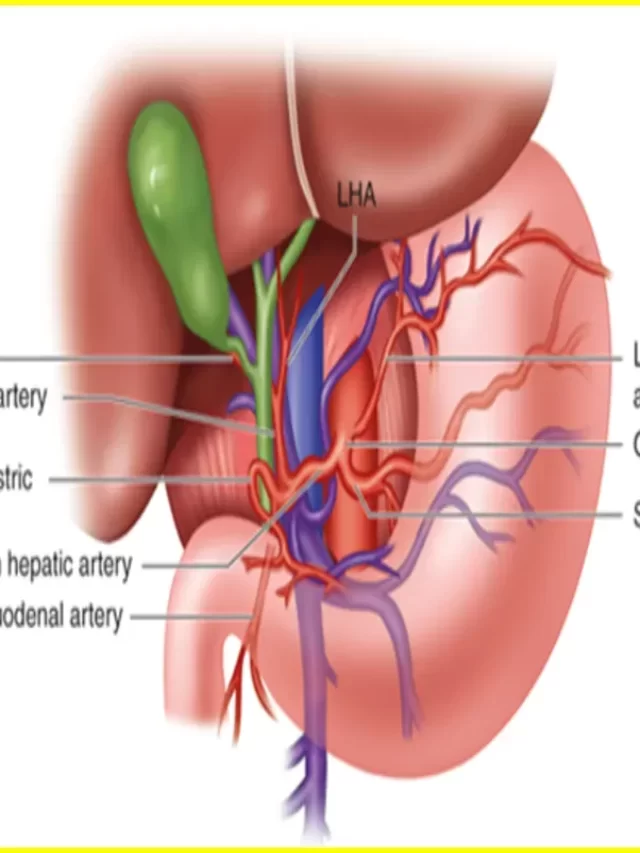
Ultrasound Machine what it is
An ultrasound machine is a type of medical imaging equipment that produces pictures of the body’s interior structures by using high-frequency sound waves. It is non-invasive, which means that no ionizing radiation is utilized, and is frequently employed for diagnostic purposes.
Key Components of an Ultrasound Machine:
- Transducer:
- The transducer is a crucial component that both emits and receives ultrasound waves. It contains piezoelectric crystals that convert electrical energy into sound waves and vice versa. The transducer is placed on the patient’s skin, and the echoes produced by the reflected sound waves are used to create images.
- Control Panel:
- The control panel consists of various buttons, knobs, and touch-sensitive screens that allow the operator to adjust settings such as depth, frequency, and gain. These controls help optimize the imaging parameters for different types of examinations.
- Monitor:
- The ultrasound machine is equipped with a monitor that displays real-time images generated from the reflected sound waves. Operators use the monitor to visualize and interpret the internal structures of the body during the examination.
- Processing Unit:
- The processing unit of the ultrasound machine analyzes the electrical signals received from the transducer. It performs complex calculations to create detailed images and provides various imaging modes, such as 2D (B-mode), Doppler, and color Doppler.
- Printer (Optional):
- Some ultrasound machines are equipped with a built-in printer for producing hard copies of the images. This can be useful for documentation and sharing the results with patients or other healthcare professionals.
- Storage and Archiving:
- Modern ultrasound machines often have the capability to store and archive images electronically. This allows for easy retrieval of patient data and comparison of images over time.
Common Uses of Ultrasound:
- Obstetric Imaging:
- Ultrasound is widely used during pregnancy to monitor fetal development, assess the placenta, and detect any potential abnormalities.
- Abdominal Imaging:
- It is employed to visualize organs such as the liver, kidneys, gallbladder, and pancreas for diagnostic purposes.
- Cardiac Imaging:
- Echocardiography, a specialized form of ultrasound, is used to assess the structure and function of the heart.
- Vascular Imaging:
- Ultrasound can be used to examine blood vessels and assess blood flow, particularly in the diagnosis of vascular conditions.
- Musculoskeletal Imaging:
- It is utilized to evaluate soft tissues and joints, aiding in the diagnosis of conditions affecting muscles, tendons, and ligaments.
What is the Ultrasound Machine
An ultrasound machine is a portable, electronic device that uses sound waves to create images of the inside of the body. It is used to view the abdomen, heart, blood vessels, and structures of the fetus. The machine produces images on a monitor that can be viewed by the doctor or patient. Portable ultrasound machines are small and light, making them easy to carry. The home ultrasound machine is large and has a built-in screen.
What is the Working principle of ultrasound?
Ultrasound imaging, also known as sonography, operates on the principles of sound waves. Here is an overview of the working principle of ultrasound:
- Generation of Sound Waves:
- Ultrasound machines generate high-frequency sound waves beyond the range of human hearing. The typical frequency used in medical ultrasound is in the range of 2 to 18 megahertz (MHz).
- Transducer:
- The ultrasound transducer is a crucial component. It consists of piezoelectric crystals that can convert electrical energy into mechanical vibrations (sound waves) and vice versa. When an electric current is applied to the crystals, they vibrate, producing sound waves.
- Transmission of Sound Waves:
- The generated sound waves travel through the body tissues. Different tissues have varying densities, and the sound waves encounter resistance as they pass through these tissues.
- Reflection of Sound Waves:
- When the sound waves encounter boundaries between different tissues or organs, some of the waves are reflected back toward the transducer. The amount of reflection depends on the density of the tissues.
- Detection of Reflected Waves:
- The transducer, which also acts as a receiver, detects the reflected sound waves. The returning waves cause the crystals in the transducer to vibrate, generating electrical signals.
- Signal Processing:
- The electrical signals generated by the transducer are processed by the ultrasound machine. The machine analyzes the time it takes for the sound waves to travel to the tissues and back, as well as the intensity of the returning echoes.
- Image Formation:
- Based on the information gathered from the reflected sound waves, the ultrasound machine creates a two-dimensional image, known as a sonogram or ultrasound scan. The image represents the internal structures and organs of the body.
- Doppler Effect (if applicable):
- In some ultrasound examinations, the Doppler effect is utilized to assess blood flow. The Doppler effect involves the analysis of changes in frequency of the reflected sound waves due to moving blood cells.
- Visualization:
- The final ultrasound image is displayed on a monitor for visualization by healthcare professionals. The image provides valuable information about the size, shape, and texture of organs and tissues.
How does an Ultrasound Machine work?
Sound waves are sent through a transducer, which is a small device that is placed on the skin. The sound waves bounce off the organs and structures of the body and return to the transducer. The transducer converts the sound waves into electrical signals, which are then sent to a computer. The computer processes the signals and produces images on the monitor.
Article About:- Health & fitness
Article About:- Medical Technology
Article About:- Sports

What are the different types of Ultrasound Machine?
There are two main types of ultrasound machines: portable and home ultrasound machines. Portable ultrasound machines are small and light, making them easy to carry. Home ultrasound machines are larger and have a built-in screen. Both types of machines use high-frequency sound waves to create images of the inside of the body.
How to Work Ultrasound Machine?
Specialized expertise and training are needed to operate an ultrasonic equipment. This is a general guide to using an ultrasound machine; however, note that features and controls may differ across models. For information specific to the machine you are using, always consult the manufacturer’s handbook.
- Power On:
- Locate the power switch and turn on the ultrasound machine. Allow it some time to initialize.
- Transducer Connection:
- Connect the ultrasound transducer to the machine. Ensure the connection is secure.
- Patient Preparation:
- Prepare the patient by explaining the procedure and positioning them appropriately for the examination.
- Transducer Placement:
- Apply a suitable ultrasound gel on the patient’s skin to improve the transducer’s contact.
- Place the transducer on the area of interest. Ensure it is held steadily for accurate imaging.
- Adjust Settings:
- Use the machine controls to adjust settings such as depth, frequency, and gain. Depth controls how deep the ultrasound waves penetrate, frequency determines image resolution, and gain adjusts the brightness of the image.
- Select Imaging Mode:
- Choose the appropriate imaging mode for your examination. Common modes include 2D (B-mode), Doppler, and color Doppler.
- Freeze and Save Images:
- Once you have obtained a clear image, you can freeze the frame. Some machines have a freeze button for this purpose. You may also have the option to save images for later review.
- Doppler and Color Flow:
- If performing Doppler or color flow studies, activate these modes to visualize blood flow. Adjust settings as needed.
- Measurements and Annotations:
- Use the measurement tools provided by the machine to obtain specific dimensions. Annotations can be added to images for documentation.
- Image Review:
- Review the acquired images to ensure quality and completeness. Make any necessary adjustments and re-scan if needed.
- End Examination:
- After completing the examination, power off the machine and properly clean the transducer.
Portable Ultrasound Machine:
Portable ultrasounds machine are small and light, making them easy to carry. They are commonly used in doctor’s offices, clinics, and hospitals. Portable ultrasound machines usually have a detachable transducer so it can be used for different parts of the body.
portable ultrasound machine
Portable ultrasound machines are small, lightweight devices that can be easily carried from one place to another. They are commonly used in the outpatient setting or for home health care, and can be a convenient and economical option for patients who need an ultrasound exam but do not have access to a full-size machine.
Portable ultrasound machines usually have all the same features as their larger counterparts, including the ability to capture high-quality images and conduct a variety of different exams. However, they may have fewer imaging modes or probes, and their screen sizes may be smaller. If you are considering purchasing a portable ultrasound machine, it is important to consult with a healthcare provider to determine which type of machine will best meet your needs.
Ultrasound Machine sales
Ultrasound Machine Sales is proud to offer a wide variety of portable and home ultrasound machines to meet your needs. We have a huge selection of new and used machines, as well as lease and financing options to ensure you get the best possible deal on the machine that’s right for you.
Our knowledgeable staff is always available to answer any questions you may have, and our website makes it easy to browse our inventory and find the right match for your needs. Whether you are looking for a specific brand or model, or simply want to explore all your options, we are here to help.
Home Ultrasound Machine
An ultrasound machine is a diagnostic imaging tool that uses high-frequency sound waves to create images of the inside of the body. It is also called sonogram. An ultrasound can be used to view many different parts of the body, including the heart, blood vessels, tendons, muscles, joints, and internal organs. A portable ultrasound machine is a small, handheld device that can be used in a number of settings, including doctor’s offices, hospitals, and clinics. A home ultrasound machine is a larger device designed for use in the home.
At Home Ultrasound Machine
If you are considering buying an ultrasound machine for your home, there are a few things you should know. An ultrasound machine uses high-frequency sound waves to create images of the inside of the body. Portable ultrasound machines are small and light, making them easy to carry. Home ultrasound machines are larger and more expensive, but they offer more features and better image quality.
TENS 7000 Digital TENS Unit with Accessories – TENS Unit Muscle Stimulator for Back Pain Relief, General Pain Relief, Neck Pain, Sciatica Pain Relief, Nerve Pain Relief.
NEED PRESCRIPTION STRENGTH PAIN RELIEF? A TENS unit muscle stimulator and electric massager that provides pain relief, acts as a muscle massager or shoulder massager, provides carpal tunnel relief, and acts as a muscle relaxer(great for muscle recovery)
OVER 1M TENS 7000 DEVICES SOLD: A consumer over the counter favorite back pain relief device and a leader in physical therapy equipment for providing immediate and lasting drug-free muscle pain relief from back pain, neck pain, tennis elbow, and bursitis
A LEADER SINCE 2008: A 10+ year favorite TENS device among medical professionals for delivering drug-free back pain relief as well as treating common ailments like neck pain, carpal tunnel relief, arthritis, shoulder, knee, elbow, leg and foot pain, Each mode changes settings to accommodate different types of pain, such as acute and chronic.
GET IMMEDIATE PAIN RELIEF: TENS machine comes with multiple TENS therapy modes that will provide instant muscle pain relief. An electrotherapy machine with everything needed for TENS therapy, a class leader in electric massagers for muscles. The pulse amplitude, or intensity level, is adjustable from 0-100mA in 10mA increments, which is controlled by the respective knobs located at the top of the device, for both channels
DUAL CHANNEL TENS UNIT: The TENS 7000 TENS unit provides TENS therapy and is a muscle stimulator, nerve stimulator, and electric massager with independent dual channels that control four(4) TENS unit pads (electrodes) for targeted pain relief

FAQ
What are ultrasound machines used for?
Ultrasound is commonly used during pregnancy to monitor the growth and development of the fetus, but it is also used for imaging the heart, blood vessels, eyes, thyroid, brain, breast, abdominal organs, skin, and muscles.
What is the cost of an ultrasound machine?
Depending on the level of technology, a mid-range to high-end ultrasound machine can cost up to $200,000. New ultrasound systems can cost between $20,000 and $75,000. Used or refurbished ultrasound equipment can cost between $5,000 and $40,000 for an average model.
What is the name of the device used in ultrasound?
Ultrasound machines, sonographs, or echographs are used to produce a visual image, called an ultrasonogram, sonogram, or echogram.
What type of radiation is used in ultrasound?
It does not have the same hazards as X-rays or other imaging technologies that employ ionizing radiation since it is based on non-ionizing radiation.
What are the 3 main types of ultrasound?
The three primary categories are:
1. The probe is moved over the skin during an external ultrasonic scan.
2. Internal ultrasonography scan: the body is penetrated by the probe.
3. Endoscopic ultrasound scan: the probe is inserted deeper into the body while connected to an endoscope, a long, thin, flexible tube.
What are the side effects of ultrasound?
Increased permeability of the membrane: pushing the tissue fluid through. less acidic in pH.
Enhanced tissue renewal: A mechanical impact.
Effect of heat: May prevent conduction. Ultrasound sensitivity is especially high in nervous tissue.
Pain lessening and muscle tone returning to normal. reduction in pH.
How to use ultrasound safely?
Process
You have to remain motionless during the entire procedure by lying absolutely still.
To avoid severe heat generation and skin burns, the interface between the device (gel pad) and your skin must be devoid of tissue folds, air bubbles, skin lesions, body hair, and greasy skin surfaces.









